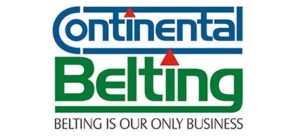Belting Glossary - Conveyor Belt Terms and Meanings
There are currently 40 names in this directory beginning with the letter A.
Accelerated aging
Intensive exposure to operating conditions to obtain an early change in physical properties of an elastomer.
Accelerated life test
A method designed to approximate in a short time the deteriorating effects obtained under normal service conditions.
Across the line starting tension
Tension developed in a belt when full electrical power is applied to the drive system.
Adhesion
Basically, the adhering, clinging, bonding or sticking of two material surfaces to one another, such as rubber to rubber, rubber to metal, rubber to wood, rubber to fabric, etc.
Adhesive
A material which, when applied, will cause two surfaces in contact with each other to stick together.
Adhesive coating
A coating applied to a surface to create or increase its bond to an adjoining surface.
Adhesive fabric
A fabric with a surface treatment which will bond two surfaces together when interposed between them.
After-cure
A continuation of the process of vulcanization after the cure has been carried to the desired degree and the source of heat removed.
Air bomb aging
Means of accelerating changes in physical properties of materials by exposing them to the action of air at elevated temperature and pressure.
Air checks
The surface markings or depressions which occur due to air trapped between material and mold or press surface.
Air curing
Vulcanization of rubber products in air opposed to vulcanizing in a press or steam vulcanizer.
Air oven aging
Means of accelerating a change in physical properties of rubber compounds by exposing them to the action of air at an elevated temperature but normal atmospheric pressure.
Angle of repose
The angle to the horizontal plane which a grainy material will naturally assume when dropped in a pile.
Anti-static
A belt’s capability to dissipate and therefore reduce build up of static electricity while running.
Apex crown
A pulley crown that continuously increases in diameter from the edges of a pulley towards the center, creating an undesired ridge in the center. See also crowned pulley.
Arc of contact
(1) The portion of a curved surface which is engaged.
(2) In belts, it refers to the portion of a pulley which is engaged by the belt and is usually expressed in degrees.
(2) In belts, it refers to the portion of a pulley which is engaged by the belt and is usually expressed in degrees.
Armored belt
A conveyor belt with crosswise insertions in the cover such as steel cables to minimize gouging or tearing of the cover by sharp objects.
Artificial weathering
Exposure to cyclic laboratory conditions involving changes in temperature, relative humidity and radiant energy, with or without direct water spray, attempting to produce changes in the material similar to that observed after long-term continuous outdoor exposure.
Atmospheric cracking
Small fissures in the surface of a belt cover caused by exposure to atmospheric conditions.
